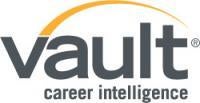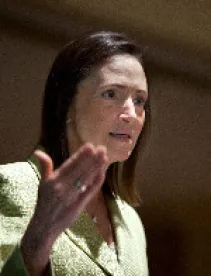On July 30, 2010, Vault and the Minority Corporate Counsel Association (MCCA) held their 5th Annual Legal Diversity Career Fair at the Renaissance Hotel in Washington, D.C. More than 1,000 law students and lateral associates registered for the event, where hiring partners and recruiters from some 30 law firms, government agencies and corporate law departments were on hand to meet with candidates, review their resumes, offer advice and answer questions.
VAULT: How would you characterize the state of diversity in the legal profession today?
In a word: evolving. In 2009, the ABA conducted an extensive national assessment of the state of diversity in the legal profession, including hearings held around the United States—with practitioners, academics, corporate counsel—whose results were synthesized into a report, “Diversity in the Legal Profession: The Next Steps.” We found that, although our profession today is more diverse and inclusive, and has made significant advances, many obstacles to free and equal professional success remain. For example:
-
While women make up just over half of the U.S. population and half of the entering classes in law schools, they represent one third of the lawyer population, about 18 percent of law firm equity partners and 20 to 25 percent of the judiciary.
- Racial and ethnic minorities make up approximately one third of the U.S. population, but they represent only 10 percent of the lawyer population, less than 16 percent of judges and 6 percent of equity partners.
These numbers do not nearly reflect the diverse range of talent in our profession. Our lack of diversity runs counter to the promise of fairness and equality that is our profession’s bedrock, depriving the community of a bench that reflects the community and of legal advice that is a product of diverse views.
First, through what are known as “pipeline programs,” we need to get more racial and ethnic minorities into law school. We must do all we can to encourage young people of all backgrounds that a career in the law can be fulfilling, and that we welcome them to the profession. Through educational and scholarship programs, we must make it easier for qualified people of diverse backgrounds to pursue legal careers.
Another challenge facing law firms—especially those that have been addressing diversity issues for a while now—is to evolve from the traditional idea of diversity to understand and embrace inclusion. Diversity basically speaks to the numbers: proactively doing things to increase the numbers of diverse persons in the firm. While that is absolutely essential, it’s not enough. We now must focus on building inclusive work environments that demonstrate that we value diverse perspectives and understand how they benefit the organization overall.
Yes. The ABA’s “The Next Steps” report found that the “recession is drying up monies for diversity initiatives and creating downsizing and cutbacks that may disproportionately and negatively affect lawyer diversity—thereby undoing the gains of past decades.”
VAULT: Where are you seeing the most improvements?
Both the quantity and quality of pipeline diversity programs have improved in recent years. The ABA, in collaboration with the Law School Admission Council, has an online Pipeline Diversity Directory. In the past year, the number of entries in the directory has almost doubled and it now includes over 400 programs across the country that work to improve diversity in the educational pipeline to our profession, such as the judicial clerkship program.
VAULT: Tell us about some of the ABA’s diversity initiatives and goals.
Nearly all entities throughout the ABA work to foster greater diversity in the legal profession. The ABA’s Center for Racial and Ethnic Diversity is a centralized resource for many of these activities. Within the Diversity Center, there are three groups that each addresses a distinct area:
- The Commission on Racial and Ethnic Diversity in the Profession serves lawyers and judges in the legal profession;
-
The Coalition on Racial and Ethnic Justice addresses social justice issues; and
-
The Council for Racial and Ethnic Diversity in the Educational Pipeline deals with pipeline diversity matters.
In addition, the Commission on Women in the Profession works to secure the full and equal participation of women in the ABA, the legal profession and the justice system. The Commission on Mental and Physical Disability Law addresses disability-related public policy, disability law, and the professional needs of lawyers and law students with disabilities. The Commission on Sexual Orientation and Gender Identity seeks to secure for lesbian, gay, bisexual, and transgender persons full and equal access to and participation in the ABA, the legal profession and the justice system.
It can be an effective tool if it is used properly and in conjunction with other tools and incentives, and if it is transparently done. If reporting on diversity metrics or rankings is used only to prod and push law firms to engage in diversity efforts, those efforts will not be sustainable. But we must know the statistics in order to know where we are and where to devote resources in order to move forward. If we can help more firms understand the value diversity brings to every aspect of their operations, metrics and rankings will become a welcome opportunity to showcase how well they are doing with hiring, retention and promotion of diverse attorneys.
VAULT: How do diversity-focused events like this career fair help advance diversity objectives?
So much of hiring involves networking and word-of-mouth referrals—hardly just help wanted ads. In such a difficult job market, it is great to bring excellent candidates together with organizations that want to hire from diverse candidate pools. It’s important for employees and employers to get out there, network and explore career options—face to face whenever possible. Events such as these are especially useful when employers are hiring out of a regular recruiting schedule. But even if such leads don’t lead directly to job placements, they form the basis of career exploration and ideas that can, and do, produce results.
VAULT: What will success look like?
A diverse profession that reflects our community. A diverse legal profession is more just, productive and intelligent, because diversity often leads to better questions, analyses, processes and solutions. We are committed to see a Supreme Court that reflects our population and a profession in which each lawyer, no matter what their gender, racial or ethnic background, sexual orientation or disability, has the opportunity to achieve all they are capable of.




 />i
/>i

